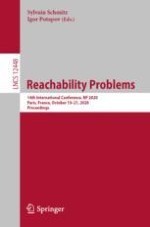2020 | OriginalPaper | Buchkapitel
Qualitative Multi-objective Reachability for Ordered Branching MDPs
verfasst von : Kousha Etessami, Emanuel Martinov
Erschienen in: Reachability Problems
Aktivieren Sie unsere intelligente Suche, um passende Fachinhalte oder Patente zu finden.
Wählen Sie Textabschnitte aus um mit Künstlicher Intelligenz passenden Patente zu finden. powered by
Markieren Sie Textabschnitte, um KI-gestützt weitere passende Inhalte zu finden. powered by
